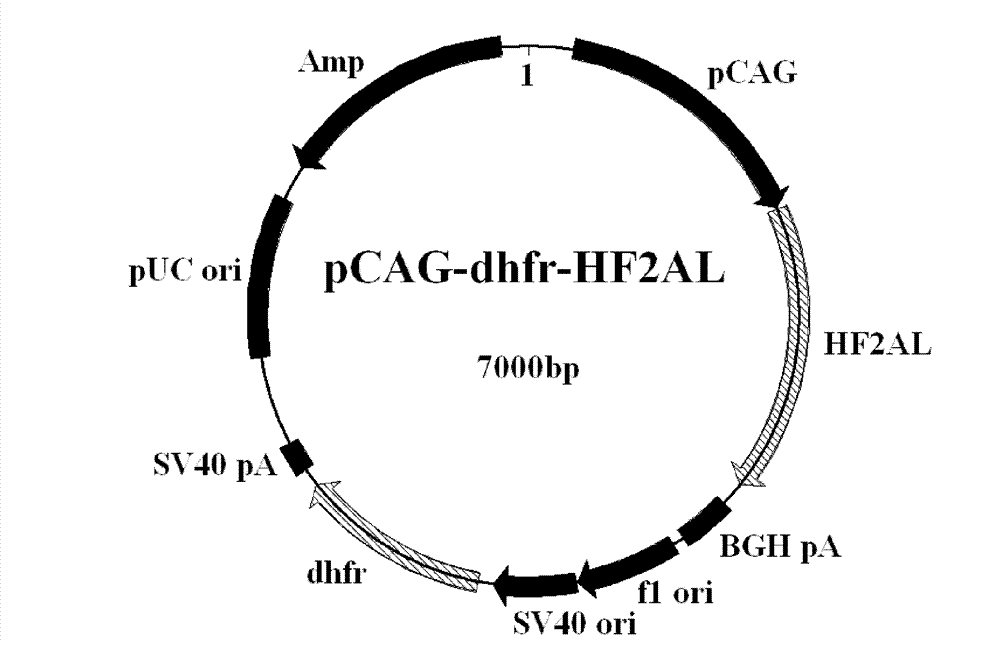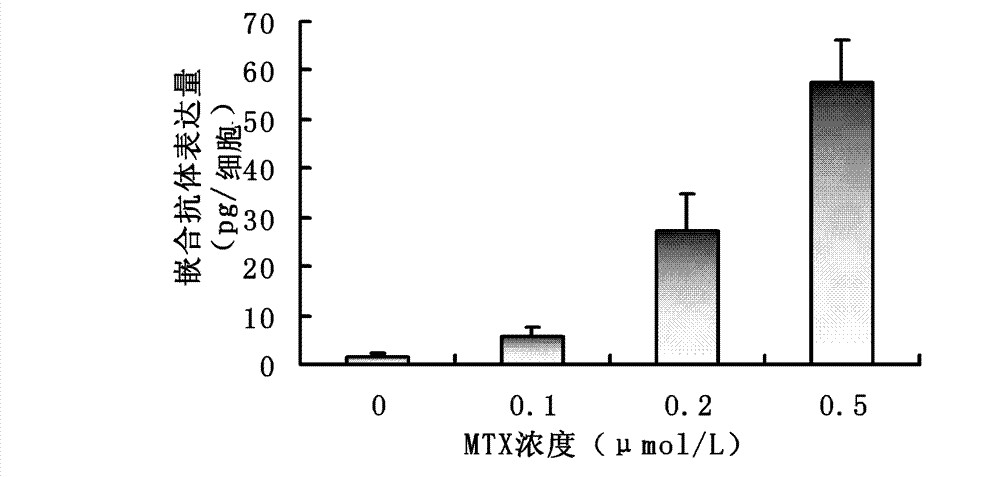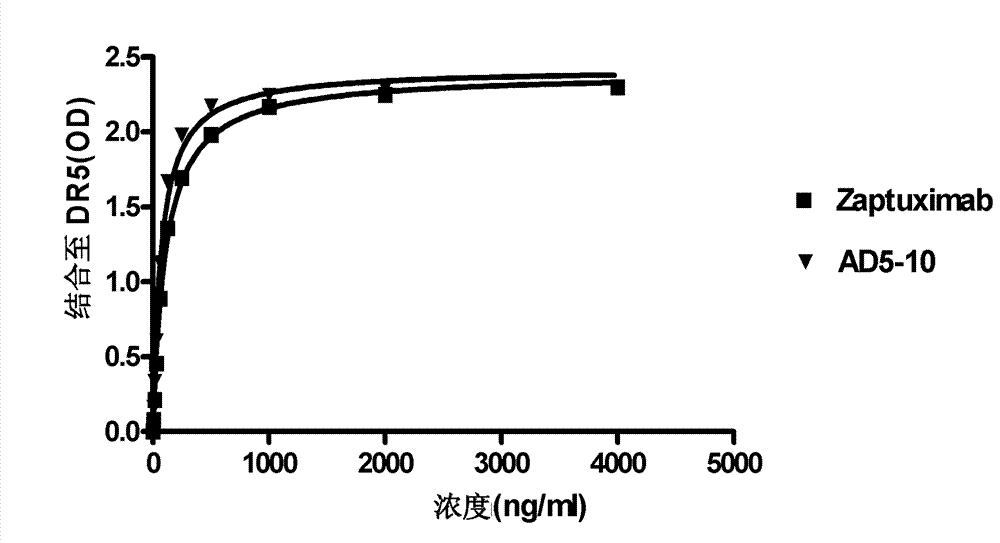Human-mouse chimeric antibody of anti-human tumor necrosis factor related apoptosis-inducing ligand receptor DR5, preparation method and uses thereof
An apoptosis-inducing ligand, tumor necrosis factor technology, applied in the direction of anti-tumor drugs, anti-animal/human immunoglobulins, antibodies, etc., can solve the problems of weakening the treatment effect, harmful to the human body, etc., to inhibit the formation of human tumor cells effect of tumor
- Summary
- Abstract
- Description
- Claims
- Application Information
AI Technical Summary
Problems solved by technology
Method used
Image
Examples
experiment example 1
[0063] Experimental Example 1 Construction of a new eukaryotic expression vector for highly expressing anti-DR5 human-mouse chimeric antibody with CAG promoter and dhfr selection marker
[0064]Anti-human DR5 single-chain antibody (scFv) prokaryotic expression vector pET15b-AD5scFv DNA (Guo Y et al., A novel anti-human DR5 monoclonal antibody with tumoricidal activity induces caspase-dependent and caspase-independent cell death J Biol Chem 2005; 280 (51): 41940-52) as a template, PCR amplification of the heavy chain variable region and light chain variable region gene fragments of the anti-DR5 chimeric antibody (VH primer, heavy chain: upstream primer VHE: 5'CGGAATTCCAGATCCAGTTG3'( SEQ ID NO: 10), downstream primer VHS: 5'ATGTGTCGACGCTGAGGAGACTGT3' (SEQ ID NO: 11). VL primer, light chain: upstream primer VLE: 5'GCGGAATTCGATGTTGTGATG3' (SEQ ID NO: 12), downstream primer VLS: 5 'ACGCGTCGACCCGTTTTTATTTC3' (SEQ ID NO: 13), was inserted into the vector (pCI-neo, Promega Co., E1841)...
experiment example 2
[0072] Experimental Example 2 Establishment of a CHO cell line that efficiently and stably expresses a chimeric antibody
[0073] The constructed eukaryotic expression vector pcDNA3-CAG-HF2AL-dhfr was transfected into CHO-dhfr by lipofection method - Cells (purchased from ATCC, CRL-9096) were screened for positive monoclonal clones by selection medium IMDM (HyClone, SH30228.01B) without hypoxanthine and thymine, and cell lines stably expressing chimeric antibodies were obtained. Methotrexate MTX (5 x 10 -8 -5×10 -7 mol / L) pressurized screening to obtain a cell line stably expressing the chimeric antibody with significantly improved expression yield. see results figure 2 . The cell line was preserved in the General Microorganism Center (CGMCC) of the China Committee for Culture Collection of Microorganisms on June 15, 2011. Its classification name is CHO cell line stably expressing anti-DR5 human-mouse chimeric antibody, and its number is: CGMCC No. 4938. The chimeric an...
experiment example 3
[0074] Experimental Example 3 Determination of specific binding of chimeric antibody to its antigen by enzyme-linked immunoassay (ELISA)
[0075] Coat 96-well ELISA plates with recombinant human DR5 expressed in Escherichia coli, block with 5% skimmed milk powder, and add different concentrations (0, 7.8, 15.6, 31.2, 62.5, 125, 250, 500, 1000, 2000, 4000ng / ml) chimeric antibody or mouse-derived anti-DR5 antibody, incubated at 37°C for 2 hours. Horseradish peroxidase (HRP)-labeled goat anti-human / mouse IgG secondary antibody (Zhongshan Jinqiao) was added and incubated at 37°C for 2 hours. Add the chromogenic substrate, after 30 minutes, add 2 M sulfuric acid to terminate the reaction, and measure the OD value. see results image 3 , the results showed that the binding of the chimeric antibody Zaptuximab to DR5 showed a typical single-site binding mode, Kd=1.1nM, and the affinity was not significantly lower than that of the mouse-derived anti-DR5 antibody AD5-10.
PUM
 Login to View More
Login to View More Abstract
Description
Claims
Application Information
 Login to View More
Login to View More - R&D Engineer
- R&D Manager
- IP Professional
- Industry Leading Data Capabilities
- Powerful AI technology
- Patent DNA Extraction
Browse by: Latest US Patents, China's latest patents, Technical Efficacy Thesaurus, Application Domain, Technology Topic, Popular Technical Reports.
© 2024 PatSnap. All rights reserved.Legal|Privacy policy|Modern Slavery Act Transparency Statement|Sitemap|About US| Contact US: help@patsnap.com










